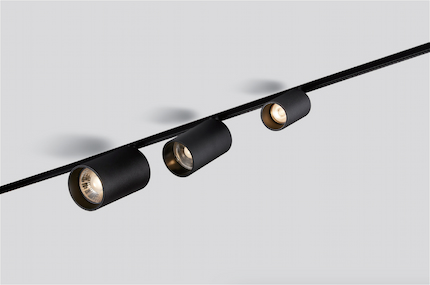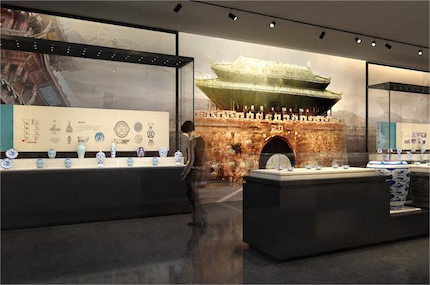Jan 10, 2024
When It Comes To Coffee Shops, Creating The Right Atmosphere Is Crucial. The Lighting Design Plays A Pivotal Role In Setting The Mood, Enhancing The Overall Experience, And Influencing Customer Behavior. Choosing The Right Led Lighting Environment Is Key To Achieving The Desired Ambiance And Functionality For A Coffee Store. This Article Will Guide You Through The Process Of Designing The Perfect Interior Lighting For A Coffee Shop And Highlight The Best Led Lighting Options For An Inviting And Productive Space.
1. Understanding The Coffee Shop Environment:
Before Diving Into Lighting Design, It'S Essential To Understand The Coffee Shop Environment And Consider Its Unique Characteristics. Coffee Shops Typically Aim For A Cozy And Comfortable Ambiance That Encourages Customers To Relax, Socialize, Or Work. The Lighting Should Support These Goals While Ensuring Visibility For Tasks Such As Reading Menus Or Working On Laptops.
2. The Importance Of Natural Light:
Natural Light Is A Valuable Asset In Coffee Shop Lighting Design. Whenever Possible, Maximize The Use Of Windows And Skylights To Bring In Natural Daylight. It Creates A Refreshing And Inviting Atmosphere While Reducing The Reliance On Artificial Lighting During The Day. However, It'S Important To Balance Natural Light With Artificial Lighting To Ensure Consistency Throughout Different Times Of The Day And Weather Conditions.
3. Layered Lighting:
Achieving A Dynamic And Adaptable Lighting Scheme Requires The Use Of Layered Lighting. Layered Lighting Involves Combining Various Lighting Sources To Create A Visually Appealing And Functional Environment.
A. Ambient Lighting: This Is The Primary Source Of Lighting That Provides Overall Illumination To The Space. Diffused Led Panel Lights Or Suspended Linear Led Fixtures Are Excellent Choices For Ambient Lighting In A Coffee Shop. They Provide Uniform Light Distribution And Can Be Mounted On The Ceiling Or Suspended To Create A Cozy Atmosphere.
B. Task Lighting: Task Lighting Is Important For Areas Where Specific Activities Take Place, Such As Reading Menus, Working On Laptops, Or Preparing Drinks. Adjustable Led Track Lights Or Recessed Spotlights Can Be Used To Provide Targeted Lighting In Seating Areas, Tables, And Counters.
C. Accent Lighting: Accent Lighting Adds Depth, Visual Interest, And Highlights Specific Objects Or Architectural Features. Led Strip Lights Can Be Installed Along Shelves, Under Counters, Or Behind Artwork To Create A Warm And Inviting Glow.
4. Warm And Cozy Color Temperature:
The Choice Of Color Temperature Significantly Impacts The Mood And Atmosphere Of A Coffee Shop. Warm Color Temperatures, Such As 2700k To 3000k, Create A Cozy And Intimate Environment That Appeals To Customers. Avoid Cool Or Stark White Lighting, As It Can Result In A Clinical And Uninviting Atmosphere.
5. Dimmers And Smart Controls:
Installing Dimmers And Smart Control Systems Provides Flexibility In Adjusting The Lighting Levels To Match Different Activities And Time Of Day. Dimmers Allow You To Create Different Moods, While Smart Control Systems Enable You To Schedule And Automate Lighting Changes, Saving Energy And Enhancing The Customer Experience.
6. Energy Efficiency And Sustainability:
Led Lighting Is The Ideal Choice For Coffee Shop Interiors Due To Its Energy Efficiency And Long Lifespan. Leds Consume Significantly Less Energy Compared To Traditional Lighting Sources, Reducing Both Operational Costs And Environmental Impact. Ensure That The Led Fixtures Chosen Have High Efficacy Ratings And Are Certified By Reliable Energy Efficiency Standards.
Designing The Interior Lighting Of A Coffee Shop Requires Careful Consideration Of The Desired Atmosphere, Functionality, And Customer Experience. By Incorporating A Combination Of Ambient, Task, And Accent Lighting, Along With The Use Of Warm Color Temperatures And Implementing Smart Control Systems, You Can Create An Inviting And Productive Environment. Remember To Prioritize Energy-Efficient Led Lighting Solutions To Reduce Costs And Contribute To A Sustainable Coffee Shop.


